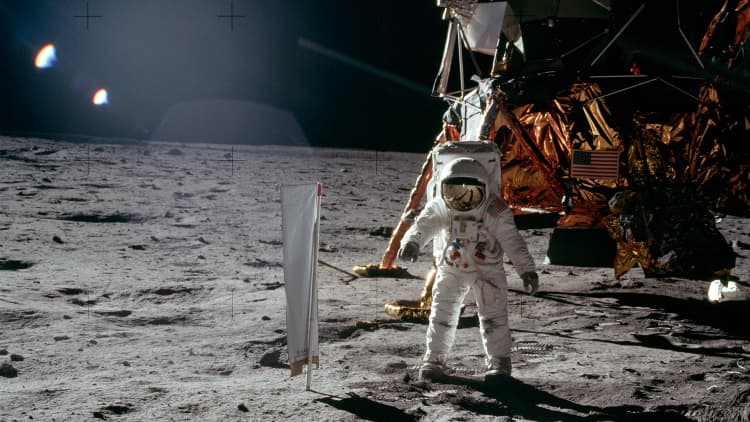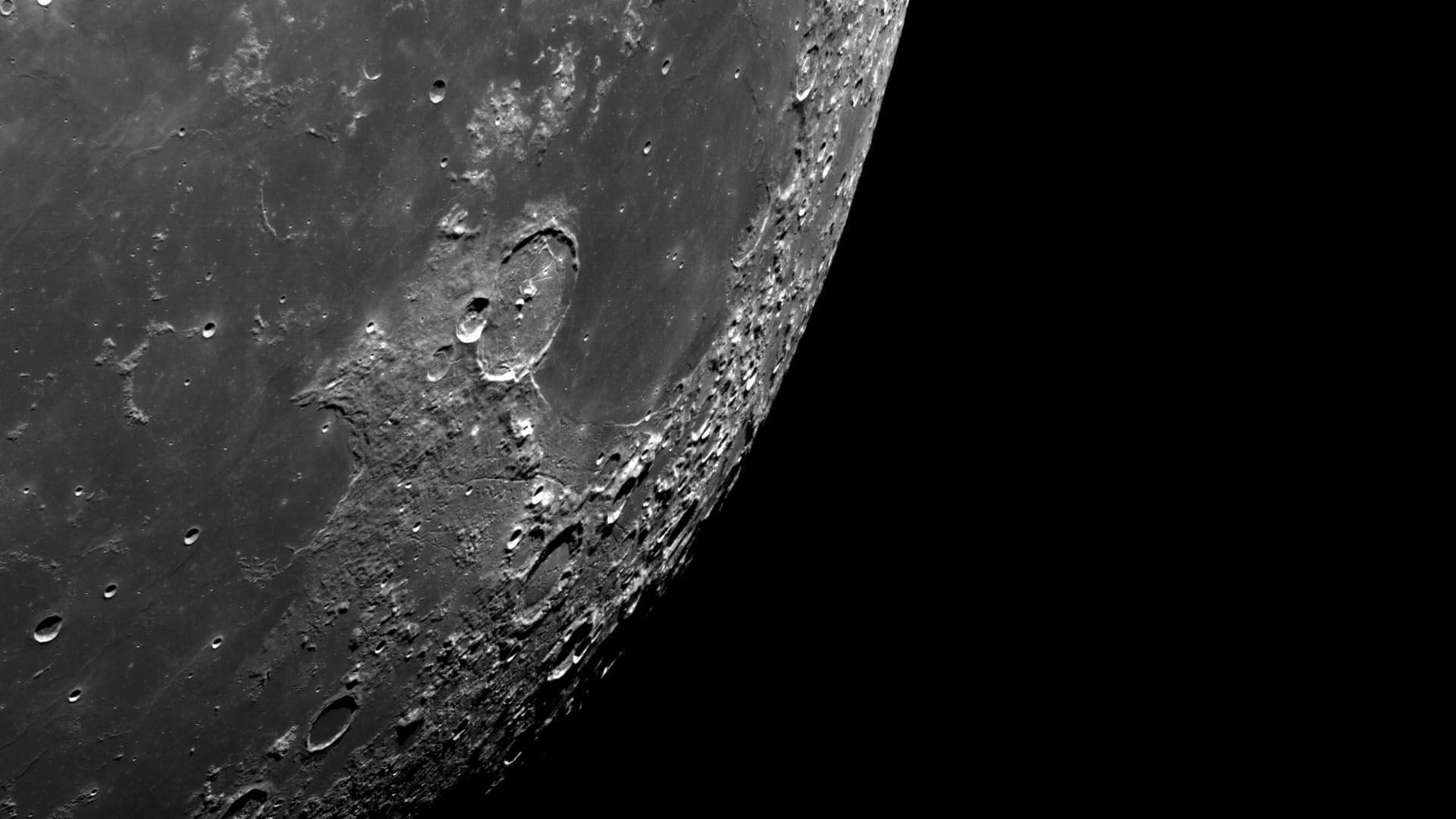The Moon’s surface seen from the Orion spacecraft on flight day 20 of the Artemis I mission.
NASA
CNBC’s Investing in Space newsletter offers a view into the business of space exploration and privatization, delivered straight to your inbox. CNBC’s Michael Sheetz reports and curates the latest news, investor updates and exclusive interviews on the most important companies reaching new heights. Sign up to receive future editions.
Overview: Artembitious
NASA’s Artemis moon mission program regularly faces a wide swath of questions – from legislators, auditors, companies and even just the American public – about goals, timeline, cost and more.
One question I hadn’t seen before was posed recently, directed at the plan to return U.S. astronauts to the moon’s surface for the first time since Apollo:
Is the Artemis 3 mission too ambitious?
Notable, too: The concern wasn’t raised by known doubters, special interest groups or a competitive party. It was NASA’s Aerospace Safety Advisory Panel.
ASAP, an independent group that reports both to NASA and Congress and focuses foremost on safety, has existed since the 1967 Apollo 1 tragedy. The group submitted its annual report for 2023, and I took a look (welcome back to another edition of “I read this so you don’t have to!”).
Most of the report covers familiar recommendations and feedback to NASA, but then I got to ASAP’s emphasis on just how many “firsts” are included in Artemis 3 objectives.
Two items that ASAP highlights repeatedly stand out to me: The HLS (Human Landing System) element, a.k.a. SpaceX’s lunar version of Starship, and the EVA (Extravehicular Activity) spacesuits. Those are two crucial parts of the Artemis 3 plan that won’t be tested during the Artemis 2 mission and therefore make their debut on the most high-profile upcoming mission.
“With all of these and other significant technical firsts occurring during this single mission, the Panel is genuinely concerned that they represent an even greater cumulative risk to an already difficult and complex Artemis III flight,” the report says.
ASAP advised NASA to consider redistributing the Artemis 3 milestones more evenly among other missions, or else face “extraordinary pressure for timely execution of a schedule that in many ways is beyond NASA’s full control.”
I find the broad ambition of Artemis to be admirable, so I think ASAP’s concern actually presents an opportunity for NASA: Expand the “Artemis mission” nomenclature beyond just Orion capsule flights to include other relevant but currently understated efforts. A crew-type vehicle is flying to the moon? Call it an Artemis mission! If Orion flying uncrewed around the moon is an Artemis mission, then the first uncrewed HLS landing should be too, because it’s arguably just as important to the goal of landing humans back on the moon.
As it stands, Artemis missions are few and years between – and I think NASA should change that to both redistribute the risk ASAP sees, as well as more appropriately highlight the major milestones toward a long-term goal of a continuous presence on the moon.
Bottom line from ASAP’s report: As the current plan stands, Artemis 2 may happen by the (already delayed) target of late 2025, but the long list of accomplishments that must happen in between all but guarantees that Artemis 3 is not launching 12 months later.
What’s up
- Fly no more: NASA’s Mars helicopter is dead. Ingenuity had a staggering run for an experimental vehicle and, most of all, showed that powered, controlled flight by an aircraft is possible on Mars. – NASA JPL
- Virgin Galactic flies customers without a trainer for the first time on the company’s Galactic 06 mission. The spaceflight carried four paying customers: Lina Borozdina, Robie Vaughn, Franz Haider and Neil Kornswiet. The company expects its next flight won’t be until the second quarter. – Virgin Galactic
- SpaceX launches first mission carrying Northrop’s Cygnus spacecraft, with the end of non-American-made Antares rockets pushing the once cargo competitor to fly on a Falcon 9 rocket in the interim. – Northrop Grumman
- Space Force highlights its attention on China’s spy satellites: The U.S. continues to worry about advancing Chinese capabilities, with analysts looking at how the country is using eyes in space to track activities. – SpaceNews
- Japan’s SLIM lander is alive, and reconnected as the country’s space agency works to generate power and complete some of its work on the moon’s surface. – SpaceNews
- NASA annual report highlights agency technologies that were commercialized, with “2024 Spinoff” featuring uses of NASA work that’s benefiting fields such as first responders, aviation and 3D-printing. – NASA
- Law firm Hogan Lovells publishes paper on space-based drug research and development, with the group pointing to a “strong impetus among the pharmaceutical and biotechnology community” to utilize upcoming private space stations. The paper helps explain the regulatory frameworks at play with such research and intellectual property. – Hogan Lovells
- Axiom tests lunar spacesuits at NASA’s Johnson, performing demonstrations of maneuverability and dexterity. – NASA
- RAND thinks the Pentagon’s space entities need to work both together and with allies better, saying in a report that the U.S. military’s various branches and offices “lack a consistent vision and desired end state for partnering with allies.” – RAND
- NASA announces astronauts for SpaceX’s Crew-9 mission, set to launch in August. – NASA
- The Orion capsule for NASA’s Artemis 1 mission is headed for a museum, as part of a display set to open at the Smithsonian’s National Air and Space Museum in 2026. – collectSPACE
Industry maneuvers
- Voyager and Airbus’ Starlab signs with SpaceX for launch on Starship, with the mammoth rocket to fly the private space station in a single launch, planned for later this decade. – CNBC
- Lockheed Martin and Boeing each awarded $66 million Space Force contracts to build communications satellites. – Department of Defense
- Spanish rocket builder PLD Space wins $43.8 million government award for completing the preliminary design review of its Miura 5 small launch vehicle. – SpaceNews
- SDA awards Momentus with $1.2 million contract modification “to continue development” of the company’s Vigoride space tug for military missions. – Momentus
- Airbus buys out Eutelsat OneWeb stake in Florida satellite-building joint venture for an undisclosed amount – Airbus
- Planet and SkyFi to collab on satellite imagery data, which the companies said will widen “access to Planet’s high-quality PlanetScope data, consisting of satellite imagery captured at a near-daily cadence, through SkyFi’s intuitive user interfaces.” – SkyFi
Market movers
- Rocket Lab releases preliminary Q4 results: The company noted that its fourth-quarter revenue was impacted by a delayed Electron launch, but estimates that it brought in between $59 million and $61 million in revenue for the period, with an anticipated net loss between $49 million and $52.5 million. Rocket Lab is set to report full fourth-quarter results on Feb. 27. – Rocket Lab
- Rocket Lab also revealed a $275 million debt raise from “qualified institutional buyers,” with the majority of the “net proceeds for working capital or other general corporate purposes, which may include potential acquisitions and strategic transactions.” – Rocket Lab
Boldly going
- Brooke Owens Fellowship names 47 undergraduates to 2024 program, as the nonprofit helps women and gender minorities land internships at space and aviation companies. – Brooke Owens Fellowship
- Negar Feher named CEO of startup Orbital Outpost X, which aims to be a supplier of parts and systems for private space stations. Feher previously was the chief revenue officer at SpaceRyde, and VP of business development at Momentus before that. – Feher
- Chad Davis, former NRO director, joins contractor Stellar Solutions as the contractor’s director of sigint, or signals intelligence, programs. – SpaceNews
On the horizon
- Feb. 3: SpaceX Falcon 9 launches Starlink satellites from California.
- Feb. 3: Axiom’s Ax-3 mission returns from the International Space Station.
- Feb. 6: SpaceX Falcon 9 launches NASA’s PACE satellite from Florida.


